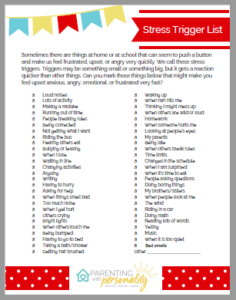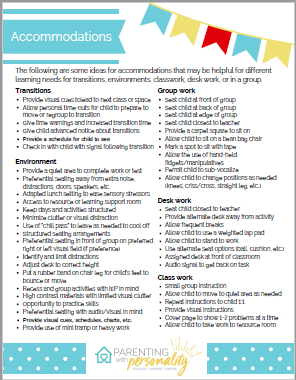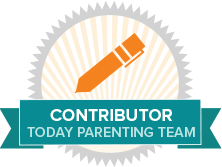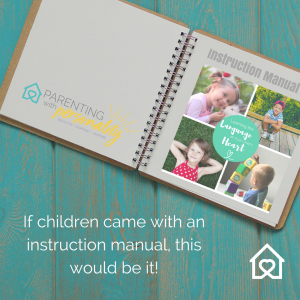
The journey of special needs, invisible disabilities, and understanding your child’s unique learning needs can be a struggle. Not long ago, I shared about starting out on the journey of J’s needs. Navigating sensory processing disorder (SPD), ADHD, executive functioning disorder, depression, and anxiety can be a true challenge. I am sharing a bit of our journey and some things we are learning along the way, in hopes that we might offer some encouragement, ideas, and support so others in similar journeys know they are not alone. We recently worked on getting an IEP in place, and I wanted to share some of that process.
We are keenly aware that the course we walk with each child is always special and different. Despite the fact that there are similarities in the seven children, we never lose sight of the fact that they are all unique individuals with differing learning styles and personalities. But our journey with J has been especially unique!
Highs and Lows
The four kids before J were all in high ability learning. J would qualify too, and his abilities tend to be colored differently with the addition of the ADHD and sensory issues. Some refer to this as being twice-exceptional (though those words make me smile a little!). He has a very high IQ. Some areas of his learning come easy (like math and reading, which he scores well beyond his level). Other areas tend to be lower, such as writing. It is not uncommon in ADHD to see differing abilities with the highs and low.
My original concerns with his learning came with the writing and seeing the discrepancy with the highs and lows. Additionally, it is becoming more apparent that the sensory issues and focus issues continue to create some real emotional frustration. The emotional regulation and impulsivity add another concerning element as they begin to affect his ability to learn and perform.
Getting The Right Information To Communicate
These tend to be issues that come along with the ADHD and the layers of other issues that can often accompany it. If you haven’t read the first post about Sensory Processing Disorder or the second one, which detailed more about ADHD you might find those helpful.
We originally took J to see a pediatrician who was able to refer us for an evaluation with an occupational therapist and psychologist. Their battery of tests and assessments revealed information that helped make sense of the struggles we were feeling. It was both sad and affirming to know the tests supported our concerns and diagnoses.

I struggled a bit with some fear, apprehension, sadness, disappointment, and anxiety. I think I even felt a little embarrassed, which might sound crazy, but I kind of wished I could “parent” the problem away. And it felt bigger than that. No parent wants to feel unable to do what is necessary! And so maybe in some way it even affected my pride. (Call me a bad mom, but I’m just being honest about the struggle and journey as I experienced it.) But another part of me felt like I was no longer alone in handling something so complex and exhausting.
As issues this year started becoming more apparent at school, we felt it was time to ask for an evaluation for an IEP. The district began the process of testing again to see if J would qualify. They did some new tests, some of the same tests, and also used the information we had gathered from the professionals already involved (tests, letters of recommendation, etc.).
Complex Issues Call For Teamwork
The district then held a meeting where the school professionals, teachers, and myself attended and went over the information gathered. There was something that felt a bit affirming to see a professional that had tested J say, “Wow! He is really complex! The things I predicted would be no problem were sometimes an issue. And the things I thought might be an issue he could often do! I have not ever tested someone quite like him!” Indeed! I feel the same complexity as I parent him and six others!! LOL!!

I also felt slightly emotional to finally have a team of people all sitting together and working to establish what he needed. They each stated what they saw as a strength with J or enjoyed about him. They also had an understanding of the complexity of the situation. In a strange way, I felt less alone in the journey.
Thankfully, I had great confidence in each person sitting in this meeting. I felt the meeting went as well as it possibly could. And I was grateful that J qualified for services under Other Health Impairments. As a result, we were able to put some accommodations in place for this coming year that will hopefully help him in his learning and performance. I couldn’t feel more grateful to all those who helped in the journey.
Resources & Tips To Help
Going into this journey of understanding J’s learning needs and then pursuing the IEP, I had no idea what to expect. And I know that not every school handles this process as well as what I experienced. So maybe some of what I researched, tried, or suggest can be helpful if you are still facing this journey ahead.
1. Be clear about your concern for your child.
Don’t be afraid to voice your concerns and write down your thoughts. It would have been very easy for my concerns to be brushed aside, as J is still functioning above grade level in some areas. His high abilities in some areas can kind of mask some of the other impairing issues. I was fortunate to have a principal that also has a degree in special education and a school with many professionals and staff that were open and responsive.
2. Open the dialogue with professionals that understand the issues well and can be a support in the process.
Different professionals provide or evaluate certain things. So, a psychologist can test but can’t prescribe. A doctor can prescribe but does not do the lengthy evaluations. An occupational therapist will evaluate different things than a psychologist. A counselor can help you make sense of the issues and develop a plan or strategy but will not do the lengthy assessments or prescribing. Each of these can or will play a different role, but their recommendations or letters may make a difference in the process. So don’t be afraid to involve them.
3. Don’t get discouraged
This journey is not for the faint of heart! It will take you far beyond what you thought you were able to withstand or bear. But you can do it. Know that you will encounter those who don’t understand, agree with proposed strategies, or simply “get it.” That’s ok. Unfortunately, there can be a stigma or myths that surround some of these special needs and invisible disabilities. Don’t waste your energy trying to convince them. Your energy is better served with your eyes on your child and the team of supportive individuals that can agree to work together for your child’s best interests.

4. Write it out.
Whether you are dealing with your child’s strengths, struggles, or necessary accommodations, write it out. Despite your best intentions, you will lose track, forget, or miss something that you wanted to communicate. Take the pressure off yourself and just write it down. The list of strengths can also come in handy on those days that you need the reminder that it’s going to be okay and that there are some pretty special things about your little one.
I found a resource that listed a handful of triggers that a child might face. I thought it was a great way for me to get J’s idea of what he faced at school and what he thought was difficult. I went through the list and had him mark those things that triggered his anger or frustration at school and home. Then I marked those I noticed. (We actually had pretty close lists!) I have redesigned this list to include some additional things and thought you might find it helpful as well. This was a great way for me to feel that J’s voice was represented in our meeting. And the school liked the idea so well they asked to use the list! (Get a download of this resource and a host of many others when you follow this link!)
5. Don’t be afraid to ask questions.
We can often feel that we are just being herded through a system of medical care for our children and despite any misgivings, doubts, or concerns, we continue on. Don’t hesitate to stop and ask questions with medical or educational professionals. There is no question that is a dumb question. You are caring and advocating for a very special individual. You can be persistent. You can be bold. I learned the hard way, to follow my Momsense (this past article details that story) but you don’t have to! And if you need time to think through things and get back with them, you can ask for that. When you are feeling confident in a plan, it will be much easier to follow through.
You might feel that certain accommodations would be helpful for your child. Don’t be afraid to talk with teachers or school staff about your concerns or ideas. I was very encouraged to see how receptive the school was to my ideas and input. I am including a list of possible accommodations that might be helpful for you to review. No child will need all of these, but you might find some that would make a difference for your child. Download your copy when you follow this link and use it for communicating with your child’s teacher or IEP team.
6. Keep the lines of communication open.
We are working this summer to help J understand himself. At the start of school, we will have some tools to help his teacher know about him and his interests and concerns. And we will commit to communicate with his teachers and school staff to continue on a path that is productive and healthy as he learns and grows. There may be things that are difficult to communicate. There may be conversations that are hard to initiate. There might even be things we have to ask or be asked that take us out of our comfort zones. But we are in this and will work diligently to keep our focus.
You Are The Best Advocate for Your Child

Did I mention this journey will stretch and grow you? Have you already figured that out?! I hope that the tips above and resources offered will help your journey feel understood and supported. You can do this! Don’t forget:
And God will continue to equip you for the journey, day by day, hour by hour, and moment by moment!
You’ve got this!







